Results 10,521 to 10,530 of 12094
Thread: Anandtech News
-
04-21-20, 06:29 PM #10521
Anandtech: Patriot Launches External PXD M.2 PCIe Type-C SSDs: Up to 2 TB
Back at CES 2020, we revealed that Patriot Memory was displaying one of its next generation of storage products, the PXD External SSD with USB Type-C. Now available to buy, the PXD M.2 PCIe 3.0 x4 Type-C SSDs are available in a trio of capacities at 512GB, 1TB and 2TB, all featuring an industrial-grade aluminium casing.
The drives support both Windows 10 and Mac OS 10.13, and come inside of a light blue aluminium chassis weighing only 35g. Patriot states that for older operating systems, a driver may be required, but doesn't state which. Bundled with each PXD drive is a Type-C to Type-A cable, meaning the drive can be natively used across many devices including desktop, notebooks, and games console such as the PS5 when it hits release.
As we reported on back at CES, the new Patriot PXD SSDs are based on the Phison PS5013-E13T DRAM-less controller with 3D NAND memory. It uses a USB 3.2 G1 bus which tops out at 10 Gb/s, which is consistent with its reported sequential read speeds of up to 1000 MB/s. It is designed for users looking for a high-speed and lightweight portable storage device, with much faster read and write speeds than conventional USB flash drives, or even portable SATA based SSDs.
The Patriot PXD external PCIe 3.0 Type-C SSDs vary in price, with the 512 GB retailing for $100, the 1 TB for $180, and the largest available model, the 2 TB available for $300. All three models can be purchased at Newegg, while users looking to buy on Amazon will currently experience COVID-19 related delays as the company is prioritizing essential shipments only in some countries. Alternatively, users can purchase the PXD drives directly at the Patriot Web Store.
Gallery: Patriot Announces External PXD M.2 PCIe Type-C SSDs





Related Reading- China Develops High Capacity QLC 3D NAND: YMTC at 1.33 Tb
- KINGMAX Joins PCIe 4.0 SSD Club with PX4480 Drives
- Buffalo Launches Minature Rugged External SSD w/ USB Type-A & Type-C
- SSSTC Launches CLI M.2-2230 SSD: SMI,Up to 512 GB, Up to 2 GB/s
More...
-
04-21-20, 06:29 PM #10522
Anandtech: Two New Razer Blade Steath 13 Notebooks: With Intel 10th Gen Ice Lake & GT
Off the back of the release of two new Blade 15 series (NVIDIA GeForce RTX and Intel 10th Gen models), Razer has also unveiled two new variations of its slightly smaller Blade Stealth 13 models. Splitting them down the middle, one is designed for gamers, while the other is for content creators on the go, with both featuring an Intel Core i7-1065G7 quad-core processor, NVIDIA's GeForce GTX 1650 Ti 4 GB graphics card, and a 512 GB PCIe 3.0 NVMe M.2 storage drive.
Kicking things off with the main differences between the two new models, the gamer-focused Razer Blade Stealth 13 model comes with a high-spec 13.3-inch FHD 1080p screen with a 120 Hz refresh rate. For those looking for a creator-focused notebook, the new Blade 13 is also available with a 13.3" 4K touch display, with both models variants including factory display calibration with 100% sRGB coverage, and 4.9 mm slim side bezels.
The other minor difference between the two new variants is that the 4K touchscreen does make that model slightly heavier, with a total weight of 1.48 kg, compared to 1.41 kg on the 120 GHz 1080p model. The dimensions of both Razer Blade Stealth 13 models sit at 304.6 x 210 x 15.3 mm (WxDxH).
Razer claims the Blade Stealth 13 features the world's fastest 13.3-inch display with a 120 Hz refresh rate, marketing it as the world's thinnest 13-inch ultrabook with such specifications.
Included within the Temper 6 CNC precision milled anodized aluminium frame is an Intel Core i7-1065G7 quad-core Ice Lake processor which operates with a base core clock speed of 1.3 GHz, boosting up to 3.9 GHz, and sporting a TDP of just 25 W.
Powering the 4K touchscreen and 1080p 120 Hz screens is an NVIDIA GeForce GTX 1650 Ti with 4 GB of GDDR6 VRAM, with an Max-Q efficiency design and a 35 W TDP. For memory there's 16 GB of low-power DDR4-3733 as a 2 x 8 GB dual channel configuration which is soldered in and can't be upgraded. For users that demand high-speed storage, Razer has preinstalled a 512 GB PCIe NVMe M.2 SSD as standard. An Intel AX201 Wi-Fi 6 wireless interface is installed which includes support for BT 5.1 connectivity as well.
The Razer Blade Stealth 13 models include a keyboard with single-zone full key backlighting powered by Razer's popular Chroma RGB, and a Microsoft Precision glass touchpad. There is a single Thunderbolt 3 USB Type-C port which uses 4 PCIe lanes, a USB 3.1 G2 Type-C which can provide power via PD, and two USB 3.1 G1 Type-A ports. It includes an HD 720 infrared webcam installed into the top bezel, with a 3.5 mm headphone/microphone combo port, and an integrated array microphone.
Expanding upon the two previously announced Razer Blade 15 series models, the two new Stealth 13 models come with a 25W CPU and a 35W GPU.Razer Blade Stealth 13 Intel 10th Gen Refresh Specifications Razer Blade Stealth 13 (4K Touch) Razer Blade Stealth 13 (1080p) CPU Intel Core i7-1065G7 (1.3 GHz Base, 3.9 GHz Turbo) - 25 W TDP GPU NVIDIA GeForce GTX 1650 Ti 4 GB Max-Q - 35 W TDP Display 13.3 Inch 4K Touchscreen 13.3 Inch 1080p 120 Hz Memory 16 GB (2 x 8 GB) LPDDR4-3733 Storage 512 GB PCIe NVMe M.2 SSD Networking Intel AX201 Wi-Fi 6 /w BT 5.1 Power 100 W USB Type-C Power Adapter Battery 53.1 Wh Ports 1 x Thunderbolt 3 USB Type-C
1 x USB 3.1 G2 Type-C (Powered)
2 x USB 3.1 G1 Type-A
1 x 3.5 mm Headphone/MicrophoneDimensions (WxDxH) 304.6 x 210 x 15.3 mm Weight 1.48 kg 1.41 kg Price (USD) Starts at $2000 Starts at $1800
In general, the new Stealth 13s fall into the second category of premium laptops available today, starting off from 15W Athena compatible Ultrabooks, 25W CPU + 35-50W GPUs such as today's models in up to 13" form-factors, 35W+65W 14" models, and finally the higher-end 45W+80W 15" devices.
Prices for the new Razer Blade Stealth 13 start at $1800 for the 1080p 120 Hz version, with a higher $2000 starting point for the 4K touchscreen model. Both can be purchased and customized at Razer.com, with stock expected to filter into retailers around the world soon.
Gallery: The New Razer Blade Steath 13:_thumb.png)
_thumb.png)
_thumb.png)
_thumb.png)
_thumb.png)
_thumb.png)
Related Reading- Razer Refreshes Blade 15 Series With Intel 10th Gen Comet Lake
- HP Announces ZBook Studio And ZBook Create Notebooks: Targeting The Top
- AMD's Mobile Revival: Redefining the Notebook Business with the Ryzen 9 4900HS (A Review)
- Intel Details 10th Gen Comet Lake-H for 45 W Notebooks: Up to 5.3 GHz*
- HP ENVY Laptop Refresh Adds OLED and RTX For 2020
- ASUS Updates Chromebook Flip Series With Intel 10th Gen Comet Lake
More...
-
04-22-20, 10:11 AM #10523
Anandtech: XPG Enters the Gaming Notebook Market with the 15.6-inch XENIA
XPG, the gaming arm of prolific storage vendor ADATA, has just announced its first-ever gaming notebook, the XENIA. Designed in collaboration with Intel, the 15.6-inch XENIA is based on Intel's 9th Gen Core platform and is paired with NVIDIA's graphics cards. Internally, the laptop uses XPG/ADATA parts throughout, including from XPG's high-performance SX8200 PCIe 3.0 M.2 1 TB SSD, as well as 32 GB of XPG DDR4-2666 SO-DIMM memory. And while XPG is entering a very crowded market for gaming notebooks, the group is none the less looking to make their start a memorable one.
For their first gaming laptop XPG has taken a pretty popular tack, starting things off with a 15.6-inch laptop based on an Intel + NVIDIA platform. The black laptop is available in two configurations – changing out the NVIDIA GPU used – with XPG building out a fairly beefy notebook to keep up with the kind of heat that comes from a powerful gaming notebook. And, because it's a gaming notebook, it comes with a 144Hz display as well as RGB keyboard lighting.
Starting at its foundation, the XPG XENIA uses an Intel i7-9750H hex-core Coffee Lake Refresh processor. This isn't exactly a new processor, and it raises some questions about why XPG has not to opted for Comet Lake; none the less Comet Lake didn't move the needle significantly, so the i7-9750H is still plenty capable with a base core clock of 2.6 GHz, with a turbo core clock of up to 4.5 GHz.
The i7-9750H is in turn paired with XPG's own high-end storage and memory parts. On the memory front, all models come with 32 GB of DDR4-2666 memory in SO-DIMM form; and while XPG hasn't gone into details of the memory configuration, 2 x 16 GB DIMM configuration is a safe bet. Meanwhile storage is provided by an XPG SX8200 Pro 1 TB NVMe M.2 SSD, a Silicon Motion SM2262EN-based drive which is rated for read and write speeds of up to 3500/3000 MB respectively.
As previously mentioned, the XPG XENIA includes a 15.6-inch IPS 1080p panel with a 144 Hz maximum refresh rate. Unfortunately the company hasn't published much more about it, so it's not clear what the color gamut and typical performance characteristics are like. Being a gaming-focused laptop, it's likely only capable of covering the sRGB gamut. Also notably absent is any listed support for variable refresh rates.
Driving that high refresh rate display, in turn, are a pair of NVIDIA GeForce GPUs. The base model XENIA comes with a GTX 1660 Ti with 6 GB of VRAM, while the high-end SKU comes with a more powerful GeForce RTX 2070 Max-Q with 8 GB of VRAM.
As for the keyboard, XPG is using silent optical-mechanical switches, with per-key RGB LED backlighting to allow users to customize the design and look of the XENIA. For mouse movement, it has a glass precision click trackpad.
In terms of connectivity, on the wireless front the laptop comes with Intel's latest AX200 wireless adapter, which offers support for Wi-Fi 6 as well as BT 5.0 devices. Meanwhile wired connectivity includes a single Thunderbolt 3 -capable USB Type-C port, a USB 3.2 G2x2 Type-A port, and two USB 3.2 G2x1 Type-A ports. And for display and audio, there's an HDMI port as well as separate headset out and mic in jacks. The laptop even offers Gigabit Ethernet, via an RJ45 port on the back of the machine.
Overall, the XENIA is not the lightest and most portable of 15-inch gaming notebooks on the market; even with magnesium alloy frame, you're looking at a weight of up to 1.85 kg, contained in a laptop 356.4 x 233.6 x 20.5 mm in size. However XPG does put that space to good use, including a 6-cell 94 Wh battery; so while this isn't going to be a laptop that is going to be gaming all day on a battery, it comes with about as much power as a laptop can legally contain. For lighter workloads, XPG has rated the laptop to run for up to 10 hours.
Rounding out the XENIA is XPG's software, which includes the XPG Prime application. Though still in beta, XPG Prime allows users to select between performance, balanced, and battery-saving power modes. The software can also be used to monitor system information such as current clock speeds and temperature, and even allow users to customize the RGB LEDs within the keyboard.XPG XENIA Gaming Notebook Specifications XPG Xenia (RTX) XPG Xenia (GTX) CPU Intel Core i7-9750H (2.6 GHz Base, 4.5 GHz Turbo) GPU NVIDIA GeForce RTX 2070 8 GB Max-Q NVIDIA GeForce GTX 1660 Ti 6 GB Display 15.6-inch IPS 144 Hz 1080p Memory XPG 32 GB DDR4-2666 SO-DIMM Storage XPG SX8200 PCIe 3.0 x4 M.2 NVMe 1 TB SSD Networking Intel AX200 Wi-Fi 6 /w BT 5.0 Battery 6-cell 94 Wh Ports 1 x Thunderbolt 3-capable USB Type-C
1 x USB 3.2 G2x2 Type-A
2 x USB 3.2 G2x1 Type-A
1 x HDMI
1 x Gigabit EthernetDimensions (WxDxH) 356.4 x 233.6 x 20.5 mm Weight < 1.85 kg Price (USD) ~$1699 ~$2199
Wrapping things up, while XPG has not published any official MSRP information for the laptops, a quick look at the first retail listings shows the GTX 1660 Ti model going for $1699, while the RTX 2070 model is showing up at $2199. The laptop is set to be available in the US, Mexico, and Taiwan imminently, while XPG also states that other markets outside of these three countries will see the XENIA hit retail shelves towards Q3.
Related Reading- Razer Refreshes Blade 15 Series With Intel 10th Gen Comet Lake
- HP Announces ZBook Studio And ZBook Create Notebooks: Targeting The Top
- AMD's Mobile Revival: Redefining the Notebook Business with the Ryzen 9 4900HS (A Review)
- Intel Details 10th Gen Comet Lake-H for 45 W Notebooks: Up to 5.3 GHz*
- HP ENVY Laptop Refresh Adds OLED and RTX For 2020
- ASUS Updates Chromebook Flip Series With Intel 10th Gen Comet Lake
More...
-
04-22-20, 10:11 AM #10524
Anandtech: Arm Development For The Office: Unboxing an Ampere eMag Workstation
One of the key elements I’ve always found frustrating with basic software development is that it can often be quite difficult to actually get the hardware in hand you want to optimize for, and get a physical interaction that isn’t delayed by networking or logging in or anything else. Having a development platform on the desk guarantees that direct access, and for the non-x86 vendors, I’ve been asking for these for some time. Thankfully we’re now starting to see some appear, and Avantek, one of the Arm server retailers, have built an Ampere eMag workstation out of a server board, with some interesting trickery to get it to fit. We were sent one to have a look at.
More...
-
04-22-20, 02:23 PM #10525
Anandtech: Motorola Announces New edge And edge+: Re-entering the Flagship Market wit
Today Motorola announced its newest high-end devices for 2020 – and the company delivered quite the surprise, not only returning back to the flagship market, but also delivering some quite incredibly competitive hardware in this range for the first time in years.
The new edge and edge+ from Moto are respectively premium and no-compromise flagship phones that are clearly meant to lure in customers who over the last few years might not have considered a Motorola phone in these categories.
The edge+ essentially sports all bells and whistles you can imagine in a 2020 device – a new Snapdragon 865 phone, a triple camera-setup along with a massive 108MP camera sensor, a 90Hz high refresh-rate screen, 5000mAh battery, wireless charging, IP68 rating, and even a headphone jack. The more cost-sensitive edge sports the same design and screen, but comes with a Snapdragon 765 SoC and sheds a few other features from the package.
More...
-
04-23-20, 09:48 AM #10526
Anandtech: How Cheap Can You Get a 6.52-inch Smartphone? DOOGEE’s X95 is only $60
Even in 2020, I would have never have guessed you could build a 6-inch or above large display smartphone for anything less than $100. We have seen a number of devices around the low 5-inch mark, such as the Alcatel models, that skirt around $100-$120, but to both offer a bigger screen at half that price? DOOGEE has gone a bit crazy. The new X95 is listed as only $60, but affords a 6.52-inch full teardrop display with an impressive 90% screen-to-body ratio and 600 nits brightness.
Now, for $60, the rest of the device has to be bargain basement, surely? The display actually only has a resolution of 1200x540, which means 202 pixels-per-inch. There’s the quad-core Mediatek A53 MT6737 SoC inside, running at 1.3 GHz, and only 2 GB of DRAM. There will be two models, of 16 GB or 32 GB storage, but the X95 does support a microSD card up to 128 GB. The battery is a sizeable 4350 mAh with 10W fast charging over microUSB, and it offers Android 10 along with 4G connectivity on bands 1/3/7/8/10.
For cameras, there are three on the back: a 13MP main camera, a 2MP portrait camera, and a 2x optical zoom camera. Together these offer a bokeh effect for portraits. The front facing camera is a 5MP unit, which also enables face unlocking which DOOGEE states can be achieved in ~0.2 seconds. We’re not going to be winning any awards for camera quality here (it is unlikely DOOGEE has any AI accelerated camera features), but for $60 there is actually more than I expected.
The case uses a ‘glass-like’ plastic material, and the X95 will come in a range of bright colors including black, green, and blue.
Doogee officially lists the price at launch as $60/£50 for the 2+32 GB model, however the links provided to its own store show that this price for the 2+16 GB model, reduced from $100, and for AliExpress it is $70 for 2+16, while at Gearbest it is $100 for the same 2+16 model. I’ve reached out to the PR team to qualify where the 2+32 models are, and how much they will cost. Orders from the Doogee store also have a limited time $5 coupon and ‘free’ N95 mask. I guess that’s one way to entice orders, given the current global situation.
Despite all the low-end components here, a $60 device might be perfect for an older family member who just needs something in case of emergencies.
Related Reading- The CUBOT H1 Smartphone Test: A Month with 3-4 Days of Battery per Charge
- CUBOT's New 6000 mAh Smartphones: Who Calls a Smartphone King Kong?
- Ulefone Shows off the T3: A Helio P90-Powered Phone with a Large Punch-Hole Display & 48 MP Camera
- Ulefone Demonstrates the Power 6: A Mid-Range Smartphone with a 6,350 mAh Battery
- Alcatel Launches 3L at MWC 2019: A 5.94-Inch Smartphone at €139
- TCL Launches the Alcatel 1S: a 5.5-inch IPS Smartphone for $109 / €109
Gallery: How Cheap Can You Get a 6.52-inch Smartphone? DOOGEE’s X95 is only $60




More...
-
04-23-20, 02:16 PM #10527
Anandtech: Crucial Annouonces P5 and P2 NVMe SSDs: Going In-House for the High-End
Micron's consumer brand Crucial has introduced two new NVMe SSD product lines, including their first high-end NVMe SSD which features Micron's in-house SSD controller design. However, Crucial's adoption of NVMe continues to lag behind most brands as both new models are still using PCIe 3 interfaces while the high-end market is migrating to PCIe 4.
The Crucial P5 is the first retail SSD to use a controller designed by Micron. Their in-house SSD controller design efforts date back at least as far as their 2015 acquisition of Tidal Systems, but the first product with a Micron-designed SSD controller only showed up a year ago: the Micron 2200 series client OEM SSD. The Crucial P5 is a clear step up from that, but still uses a PCIe gen3 interface, so it won't be setting any performance records and will face an increasing number of PCIe gen4 competitors as the year goes on. However, it should still deliver solid performance for all but the most demanding prosumer use cases, especially since it looks like Intel won't be offering PCIe gen4 host support this year. The P5 also includes support for all the usual encryption standards, features that are missing from many high-end NVMe SSDs that target the consumer market exclusively and not business customers.
The Crucial P2 is their second entry-level NVMe SSD, but it is not a direct replacement for the QLC-based P1. The P2 is at least initially only available in low capacities of 250GB and 500GB, and cuts costs by using a DRAMless controller with TLC NAND rather than the P1's combination of cheaper QLC NAND but a controller with a DRAM cache. Micron hasn't disclosed what controller is used on the P2, but it seems likely they're sourcing from a third party as with previous Crucial SSDs—and it might not even be the same controller for both capacities. While both capacities have performance specs that fall within the ranges we expect for a four-channel DRAMless NVMe SSD, the 500GB model is actually the slower one by most metrics. This indicates that at least one of either the NAND or the controller is meaningfully different from the 250GB model. The 500GB might be using NAND parts with a higher per-die capacity and thus not have any greater parallelism, or it may be using an entirely different controller (or both). The 500GB model's endurance rating is also the same 150TB as the 250GB model, which puts it in QLC territory (though still better than the 500GB P1's 100TBW rating).Crucial P5 SSD Specifications Capacity 250 GB 500GB 1 TB 2 TB Form Factor M.2 2280 Interface PCIe 3.0 x4, NVMe Controller Micron in-house design NAND Flash Micron 96L 3D TLC* DRAM Yes Sequential Read 3400 MB/s Sequential Write 1400 MB/s 3000 MB/s Random Read IOPS 210k 390k 430k Random Write IOPS 355k 500k Max Power 7 W Encryption TCG Opal 2.0, IEEE 1667, eDrive Warranty 5 years Write Endurance 150 TB
0.3 DWPD300 TB
0.3 DWPD600 TB
0.3 DWPD1200 TB
0.3 DWPD
Micron's press release for the P2 mentions that it will be available in capacities up to 1TB, but the spec sheets make no mention of the 1TB model. This may be another situation like the 2TB Crucial P1 that was announced as coming a bit later than the rest of the lineup, but never hit the market.
Micron has confirmed that both the P2 and P5 are currently using their 96L 3D TLC NAND, but they reserve the right to change that in the future. It's unlikely that the P5 will be switched to QLC NAND, but much like the MX500 SATA drive this model might stick around for years even after a replacement with a faster interface (PCIe 4) is introduced. In that case, it would be reasonable to expect the P5 to be updated with a newer generation of TLC NAND, and performance probably won't change significantly. The P2 product line could easily become a mix of TLC and QLC, which Micron has done with the entry-level BX500 SATA SSDs. If/when the P2 gets 1TB or larger capacity options those would seem likely to use QLC NAND, and the 500GB model could probably also be switched to QLC given that its rated performance is not too different from the 500GB P1. We encourage Micron to be more transparent about their controller and NAND choices and especially any post-launch changes.Crucial P2 SSD Specifications Capacity 250 GB 500GB Form Factor M.2 2280 Interface PCIe 3.0 x4, NVMe Controller undisclosed NAND Flash Micron 96L 3D TLC* DRAM No Sequential Read 2100 MB/s 2300 MB/s Sequential Write 1150 MB/s 940 MB/s Random Read IOPS 170k 95k Random Write IOPS 260k 215k Max Power 2.5 W 3.5 W Encryption None Warranty 5 years Write Endurance 150 TB
0.3 DWPD150 TB
0.16 DWPDMSRP $54.99
(22¢/GB)$64.99
(13¢/GB)
The Crucial P5 is not yet listed on online retailers, but Crucial.com has the P2 available for direct purchase and it's starting to show up on some online retailers. Launch prices of $55 and $65 are similar to competitors like the WD Blue SN550, but Western Digital has set a performance standard for entry-level NVMe drives which the Crucial P2 may have trouble beating.
More...
-
04-24-20, 07:49 AM #10528
Anandtech: The iPhone SE (2020) Hands-On Quick Review: A Reinvigorated Classic
Apple’s latest iPhone SE is being released today, and it’s certainly going to make a big impact on the market, for the simple reason that this is a $399 iPhone. We’ve had the new phone for a mere 24 hours, but we've been able to quickly put the device through its paces, showcasing the biggest differentiating factors for the phone – a device that can be essentially described as an iPhone 8 but with the brains of an iPhone 11.
In that sense, the second-generation iPhone SE is an extremely straightforward device. Externally, there’s very little that exposes it as a 2020 phone, with only the most minute design changes present. Powered by Apple's latest-generation A13 chip however, it’s hiding the strongest internal components in the market right now, easily beating any other device from the competition – at any price point. What’s left to be tested is how the new iPhone SE’s camera holds up, and if there’s any other noticeable differences between it, the iPhone 8, and the iPhone 11 series phones.
More...
-
04-24-20, 08:51 AM #10529
Anandtech: Intel Reports Q1 2020 Earnings: Another Strong Quarter For Both Client and
Kicking off earnings season for the tech industry, Intel yesterday evening reported their financial results for the first quarter of the year. And, like pretty much every Intel quarter for the last couple of years, it was a doozy, with Intel once again recording growing revenues and a very healthy profit margin.
For the first quarter of 2020, Intel reported $19.8B in revenue, a significant improvement over the year-ago quarter, and only slightly behind Intel’s record-breaking Q4. As a result of this strong revenue, income was also very healthy for the company, with Intel recording $5.7B in net income, a 43% jump over Q1’19. Meanwhile gross margins were up 4 percentage points to 60.6%, pushing Intel back above their much revered 60% gross margin threshold.
Breaking things down on a group basis, many of Intel’s internal reporting groups saw double-digit growth over the year-ago quarter. Client computing revenue was up 14% to $9.8B, and data center revenue was an even bigger winner with $7.0B in revenue, a 43% jump over the previous year. The significant growth in the data center segment comes as Intel saw both higher average selling prices and higher volumes overall, with ASPs and volumes growing by 13% and 27% respectively. Overall Intel attributes the data center gains to the company’s “broad strength” in the market, though they did note that they’ve seen a 53% year-over-year increase in revenue from cloud service providers.Intel Q1 2020 Financial Results (GAAP) Q1'2020 Q4'2019 Q1'2019 Revenue $19.8B $20.2B $16.1B Operating Income $7.0B $6.8B $4.2B Net Income $5.7B $6.9B $4.0B Gross Margin 60.6% 58.8% 56.6% Client Computing Group Revenue $9.8B -2% +14% Data Center Group Revenue $7.0B -3% +43% Internet of Things Revenue $1137M -2% +8% Non-Volatile Memory Solutions Group $1.3B +8% +46% Programmable Solutions Group $519M +3% +7%
As for client computing revenue, the biggest gains there came from notebook ASPs, which were up 22% over the year-ago quarter. Other client metrics were relatively tame; notebook volumes actually slipped 3%, while on the desktop, ASPs were up 4% while volumes were down 4%. For Intel’s client group, the company is coming off of the second quarter of selling Ice Lake laptops, with improving supply and improving helping to drive those numbers. As well, Intel’s new Comet Lake-H CPUs were recently launched, which means those would have been shipping to OEMs in Q1 as well.
Rounding out Intel’s product portfolio, the company recorded smaller gains for their Programable Solutions Group, as well as their Internet of Things business. Overall IoT was a mixed bag: Mobileye revenue, which the company offers a separate breakout, was up 22% over the previous year, but the rest of Intel’s IoT business saw a 3% drop in revenue. Finally, Intel’s storage group was a surprising winner, with record revenue pushing them to year-over-year growth of 46%, thanks to higher NAND ASPs and lower unit costs.
Meanwhile, like most other tech companies, the 800lb gorilla of the chipmaking world finds itself in an interesting position as the novel coronavirus pandemic has shuttered large parts of the world’s economies. For Q1, Intel believes they actually benefitted somewhat from the outbreak, as companies and consumers needed to make previously-unplanned purchased of laptops and other equipment for working from home and remote learning. However as the pandemic continues, it’s likely to start impacting Intel’s sales in other ways, as idled business won’t be making their usual purchases and expansions. As a result, Intel isn’t even providing full-year financial guidance due to the economic uncertainty that the pandemic has caused.
On the flip side of the coin, as a business and employer themselves, the coronavirus outbreak has also threatened Intel’s manufacturing operations. Despite that, according to Intel the company was able to keep all of its essential manufacturing operations going, with an on-time delivery rate that’s still better than 90%. So thus far Intel seems to have weathered the first part of the pandemic fairly well.
All eyes then will be on the second quarter, both for continuing developments with the coronavirus pandemic, as well as Intel’s own internal manufacturing efforts. With Intel set to start shipping its 10nm Tiger Lake CPUs to OEMs by mid-year, the company is going to be pushing its 10nm manufacturing lines harder than ever as they ramp up for a new generation of CPUs. While slowly improving, 10nm’s rocky bring-up remains a bit of a proverbial albatross around Intel’s neck, so further improving capacity and yields will go a long way towards helping Intel maintain its success, especially in light of heavy competition from AMD.
More...
-
04-24-20, 11:42 AM #10530
Anandtech: NVIDIA's GTC 2020 Keynote Is Back On: To Be Broadcast on May 14th
After becoming the victim of the SARS-CoV-2 coronavirus not once but twice, NVIDIA’s GTC 2020 keynote address has finally been rescheduled. The virtual keynote is now set to be broadcast on YouTube on May 14th, at 6am Pacific (13:00 UTC).
One of the many technology trade shows impacted by the now global pandemic, NVIDIA resorted to breaking up their annual GPU Technology Conference into multiple pieces. A number of presentations and sessions originally scheduled to be given at the show have instead been moved online as part of NVIDIA’s digital GTC 2020 conference. Meanwhile the show-defining keynote speech, as always to be delivered by CEO Jensen Huang, was previously rescheduled as a digital event for March before being postponed entirely.
And while NVIDIA isn’t saying much new about the contents of the keynote itself, it’s still expected to be one of NVIDIA’s most important presentations of the last few years. In particular, this year’s keynote is widely anticipated to include the announcement of a next-generation compute GPU architecture.
NVIDIA's current Volta architecture-based GV100 GPU is now a few years old, and supercomputer planning announcements have tipped the fact that NVIDIA will have a new Tesla accelerator ready later this year. The current generation of Tesla accelerators have been a huge success story for NVIDIA, so there's a great deal of interest in seeing how NVIDIA will keep up that momentum, especially in the face of stiff competition from all directions, from FPGA suppliers to Intel's Xe GPU family.
More...
Thread Information
Users Browsing this Thread
There are currently 17 users browsing this thread. (0 members and 17 guests)




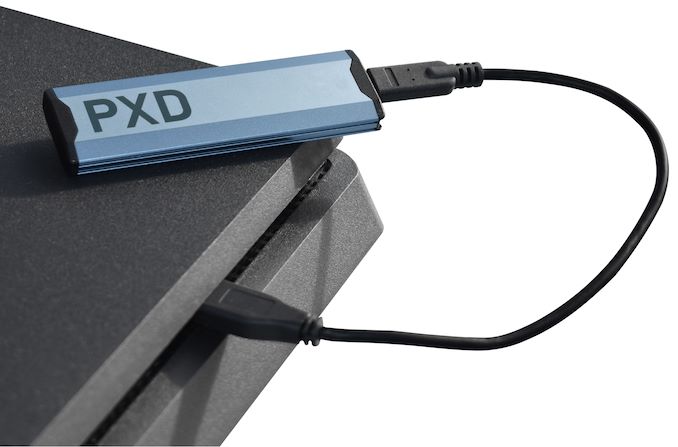


 Quote
Quote_575px.jpg)


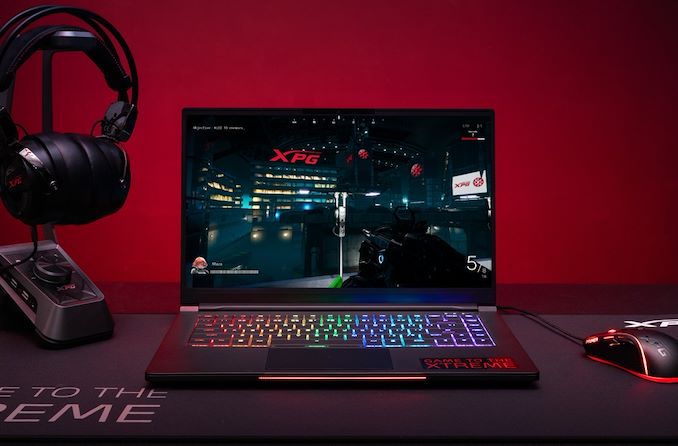
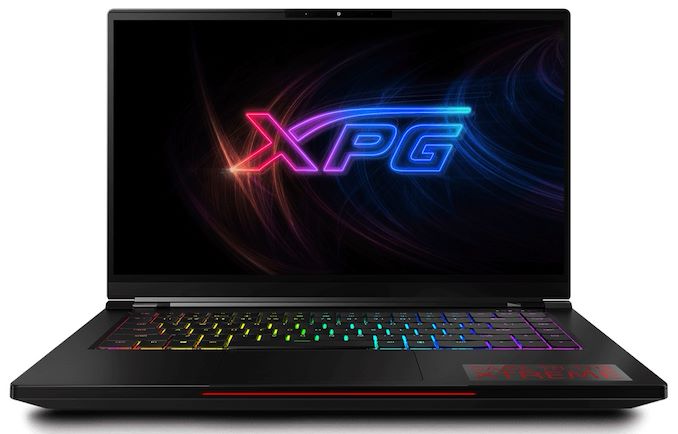
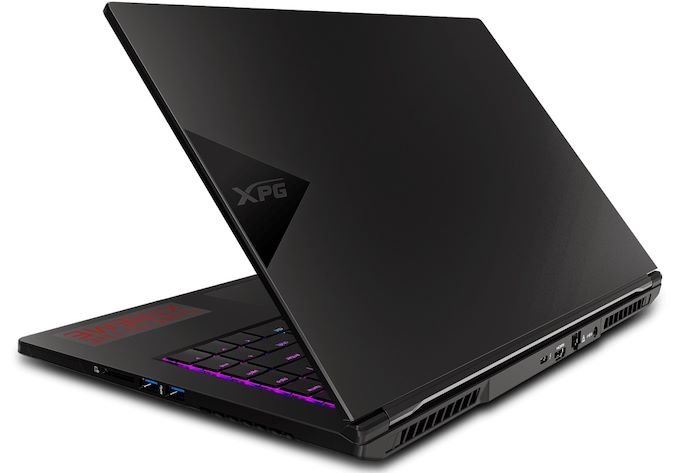
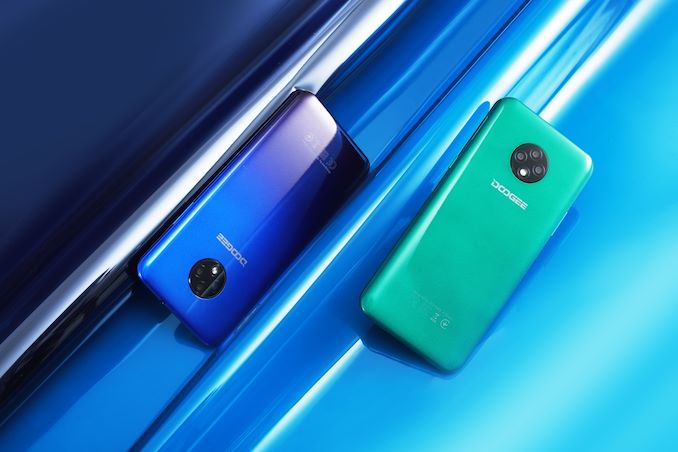

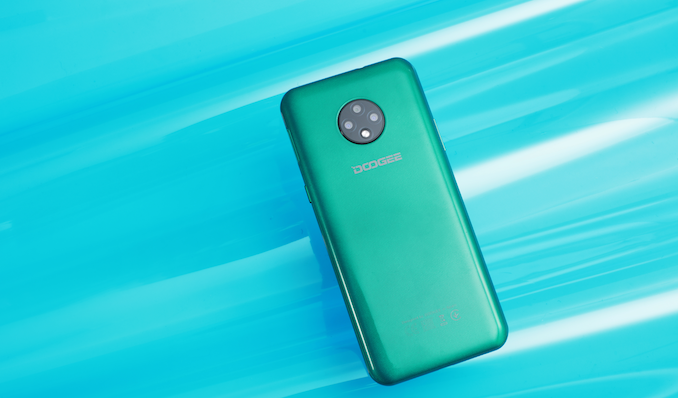


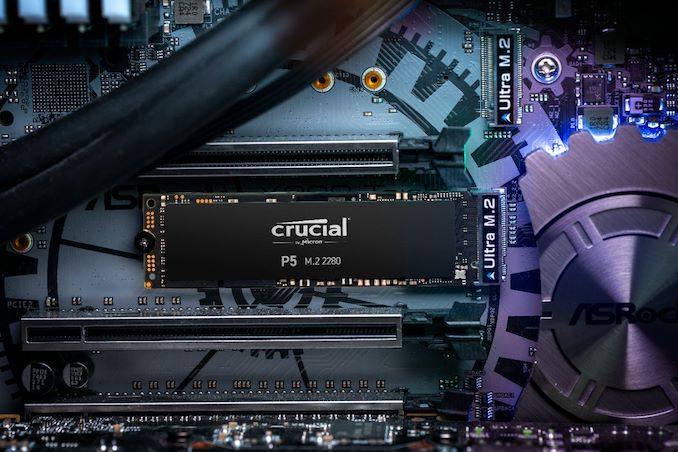



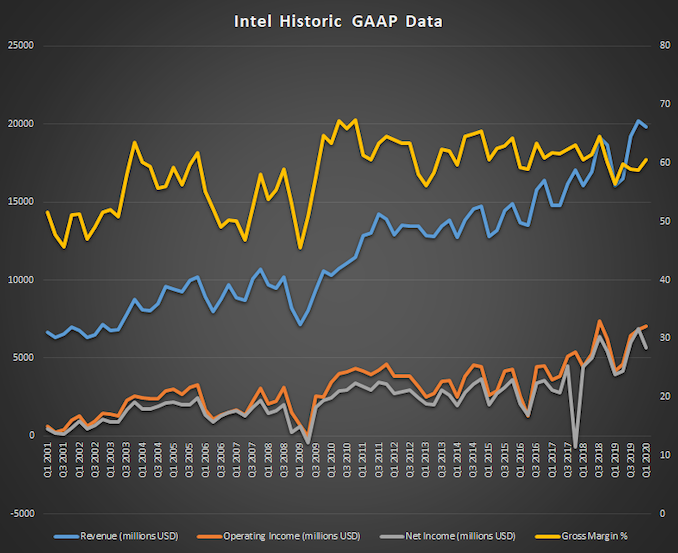
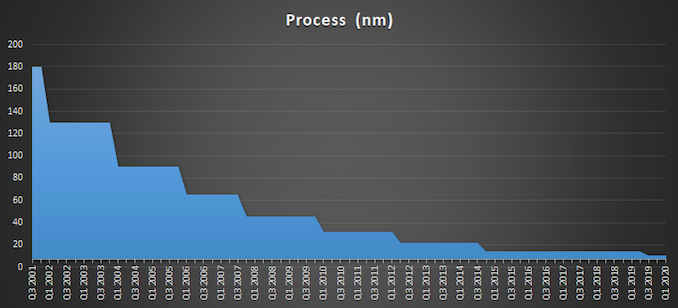

















Bookmarks